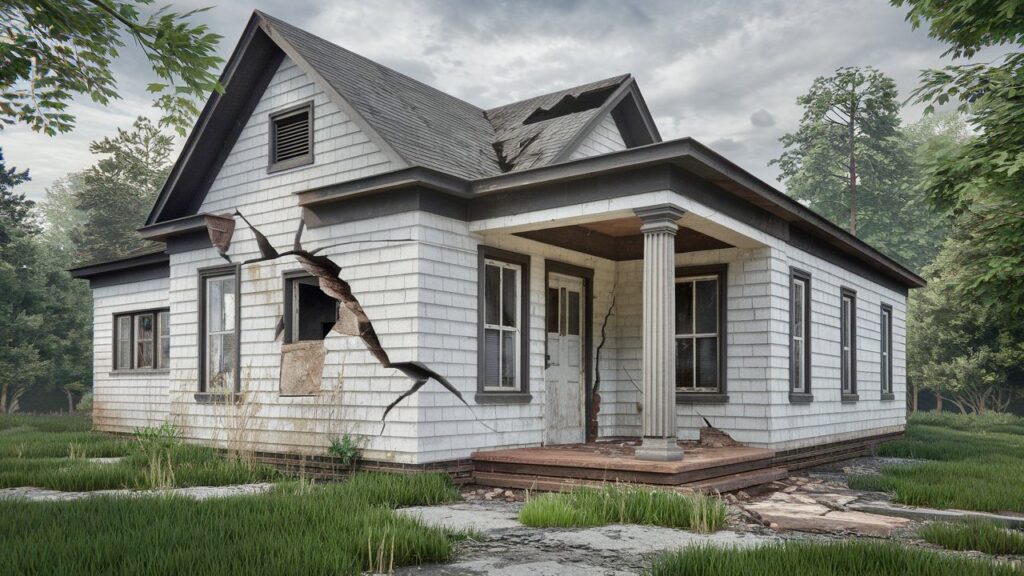Buying a home is a significant investment, and it’s crucial to ensure you’re making a sound decision. One of the biggest fears for homebuyers is purchasing a “money pit” – a property that requires constant and costly repairs, draining your finances. By being diligent and conducting thorough research, you can avoid this scenario and make an informed purchase.
Spotting Potential Money Pits: Key Red Flags

1. Structural Issues:
- Cracks in walls or ceilings: Large, jagged cracks can signal serious foundation problems.
- Uneven floors or doors that don’t close properly: These could indicate foundation shifting.
- Sagging rooflines: This can point to major issues with the roof’s support structure.
2. Water Damage:
- Water stains on ceilings or walls: These often indicate leaks, potentially from the roof or plumbing.
- Musty odors: Could point to hidden mold or mildew.
- Puddles in the basement or crawl space: May indicate drainage problems or leaking pipes.
3. Roof Problems:
- Missing or damaged shingles: Signs of a roof in need of replacement or repair.
- Sagging or uneven roofline: Suggests potential structural issues.
- Visible leaks or water stains on ceilings.
4. Plumbing Issues:
- Low water pressure: Could indicate clogged pipes or leaks.
- Rusty pipes: Older homes may have galvanized steel pipes, which rust and can burst.
- Visible leaks or water damage: Check under sinks, around toilets, and in the basement.
- Old water heater: May require costly replacement soon.
5. Electrical Issues:
- Old or inadequate wiring: Homes built before the 1960s may have outdated wiring.
- Flickering lights or tripped circuit breakers: Could indicate faulty wiring or overloaded circuits.
- Exposed wiring or outlets that don’t work: Points to serious electrical system issues.
6. Pest Infestations:
- Signs of termites or carpenter ants: Wood damage, discarded wings, or small holes in the woodwork.
- Rodent droppings or nests: Mice and rats can cause significant damage.
- Insect infestations: Check for ants, cockroaches, or bedbugs.
7. Neighborhood Decline:
- Deteriorating infrastructure: Poorly maintained streets, abandoned buildings, or low property values.
- High crime rates: Can negatively impact property values and quality of life.
- Zoning issues: Ensure the area is zoned for residential use and doesn’t have potential for industrial development.
8. Age of Appliances:
- HVAC system: Units older than 10 years might need replacement soon.
- Major appliances: Consider the age and condition of refrigerators, ovens, and dishwashers.
9. Hidden Costs:
- Property Taxes: Can vary significantly based on location and property value.
- Homeowners Insurance: Premiums vary based on factors like location, age of the home, and coverage options.
- HOA Fees: If applicable, consider the cost of monthly or annual HOA fees.
- Utility Costs: Heating, cooling, and other utilities can add up quickly.
10. Professional Inspections:
- Home Inspection: A professional inspection can identify hidden issues like foundation problems, plumbing leaks, and electrical hazards.
- Pest Inspection: Assess for termites, rodents, and other pests.
Beyond the Inspection:
- Research the Neighborhood: Consider factors like schools, commute times, and access to amenities.
- Talk to Neighbors: Get a feel for the community and any potential concerns.
- Budget for Potential Repairs: Factor in potential repair costs into your budget to avoid financial surprises.
Buying a home is a significant investment. By conducting thorough research, identifying potential red flags, and seeking professional guidance, you can increase your chances of finding a home that is a sound investment and a source of joy for years to come.
Contact Brazoban Realty today to connect with experienced agents who can guide you through every step of the home buying process.
Stay updated with exclusive tips and market insights by subscribing to our weekly newsletter.
Don’t miss out on any price drops or new listings! Sign up for property alerts and save your searches and favorite properties. Begin your real estate search and never miss a great opportunity.
We are looking forward to reading your comments and questions below.
Sources:
- How to Spot a Money Pit Before You Buy: A Guide for Homebuyers by Aiden Lowrie for Zoo Casa
- 5 Signs a House May Turn Into a Money Pit by Donna Fuscaldo for AARP
- 7 ways to avoid a homebuilding money pit by BUILD by TJH for Thomas James Homes




